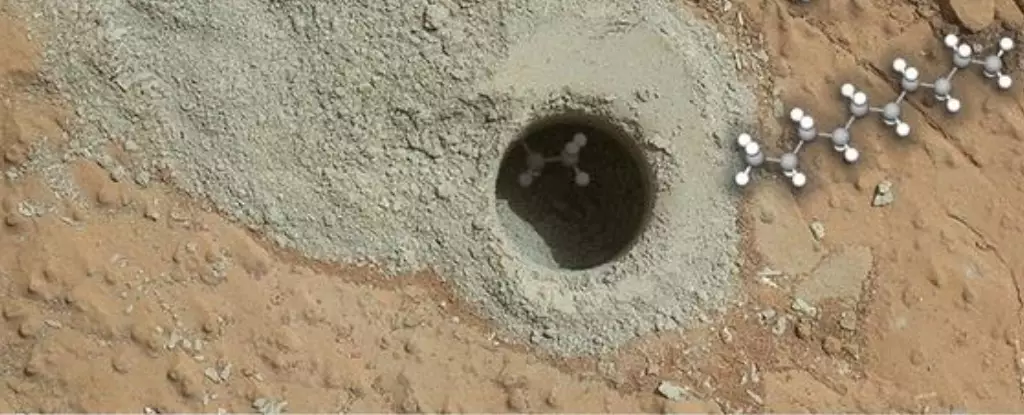As we stand on the precipice of extraterrestrial exploration, recent revelations from NASA’s Curiosity rover are making waves in the scientific community. The detection of long carbon chains—ranging up to a dozen atoms—in what seems to be an ancient lakebed on Mars not only adds a significant entry to our galactic chemical library but also bolsters the tantalizing speculation regarding the possibility of past life on our neighboring planet. Led by Caroline Freissinet from the French National Centre for Scientific Research, this international collaboration confirms that we are on the brink of unraveling some of the most elusive mysteries of our solar system.
Every time we send a rover into uncharted territory, we venture into the unknown, driven by an insatiable curiosity to learn whether we are alone in the cosmos. The Curiosity rover, equipped with a sophisticated sampling instrument, has performed admirably, revealing an ever-deepening understanding of the Martian landscape and its geological history. Findings like these ignites not just scientific interest but imaginations worldwide as we ponder whether life could have flourished on Mars or if it ever had the potential to do so.
The Chemical Dossier of Mars: A New Chapter for Organic Research
The latest analysis conducted by the scientific team provides a remarkable glimpse into the carbon chemistry of Mars. Finding carbon chains like decane, undecane, and dodecane opens up a new dialogue about the planet’s possible habitability. While it is critical to recognize that these compounds might have formed through non-biological processes, their mere presence bears weight in discussions surrounding biosignatures—the telltale signs of life.
As the Curiosity rover traverses the Gale crater, its observations have sparked questions that are eagerly pursued by scientists: Could the environmental conditions on ancient Mars have allowed complex organic compounds to form? The thrilling aspect of this discovery lies not only in the *what* but also in the *how*. The team’s experimental procedures involved a gas chromatography-mass spectrometry analysis at extreme temperatures, isolating and quantifying these carbon chains from a mudstone deposit named Cumberland. This meticulous analysis underscores our technological capabilities and offers hope for future missions that could take us even further into the Martian past.
From Simplicity to Complexity: The Potential for Life
One could argue that the significance of these findings lies in the questions they trigger. The simple presence of hydrocarbons could suggest the fundamental building blocks of life may have once existed on Mars. However, the possibility that these chains emerged from abiotic sources complicates the narrative. The researchers highlight that the carbon molecules could arise from simpler compounds like hydrogen and carbon monoxide—making it equally plausible that biological processes are neither confirmed nor entirely disregarded.
The notion of carboxylic acids—a familiar component in Earth-based biochemistry—is yet another thread woven into this intricate narrative. The research team acknowledges that, while abiotic processes may account for these compounds, they are also a universal byproduct of biological activity. This duality raises a critical point: should we embrace optimism in the face of these findings and contemplate the potential for ancient Martian microorganisms, or should we take a cautious approach, recognizing the limits of our current understanding of extraterrestrial biology?
Future Missions and the Anticipation of Discovery
The exploration of Mars is far from over; rather, it is entering a thrilling new phase. While these results lay the groundwork for understanding organic chemistry on Mars, they also set the stage for future missions that may dig deeper into Martian geology and potentially uncover evidence of life. Ironically, as much as our current technologies push boundaries, the real breakthroughs may come from innovations yet to be conceived.
Our fascination with Mars is only fueled further by these discoveries. With every new piece of evidence, we are invited to dream and theorize about a time when life could have surged across the Martian terrain. Understanding these carbon chains is not merely an academic exercise; it is a plea for deeper inquiry into the nature of life beyond our blue planet, enriching our collective quest for knowledge and our desire to find our place in the universe. Each analysis, each sample gathered, brings us closer to answering the age-old question: Are we alone?


Leave a Reply